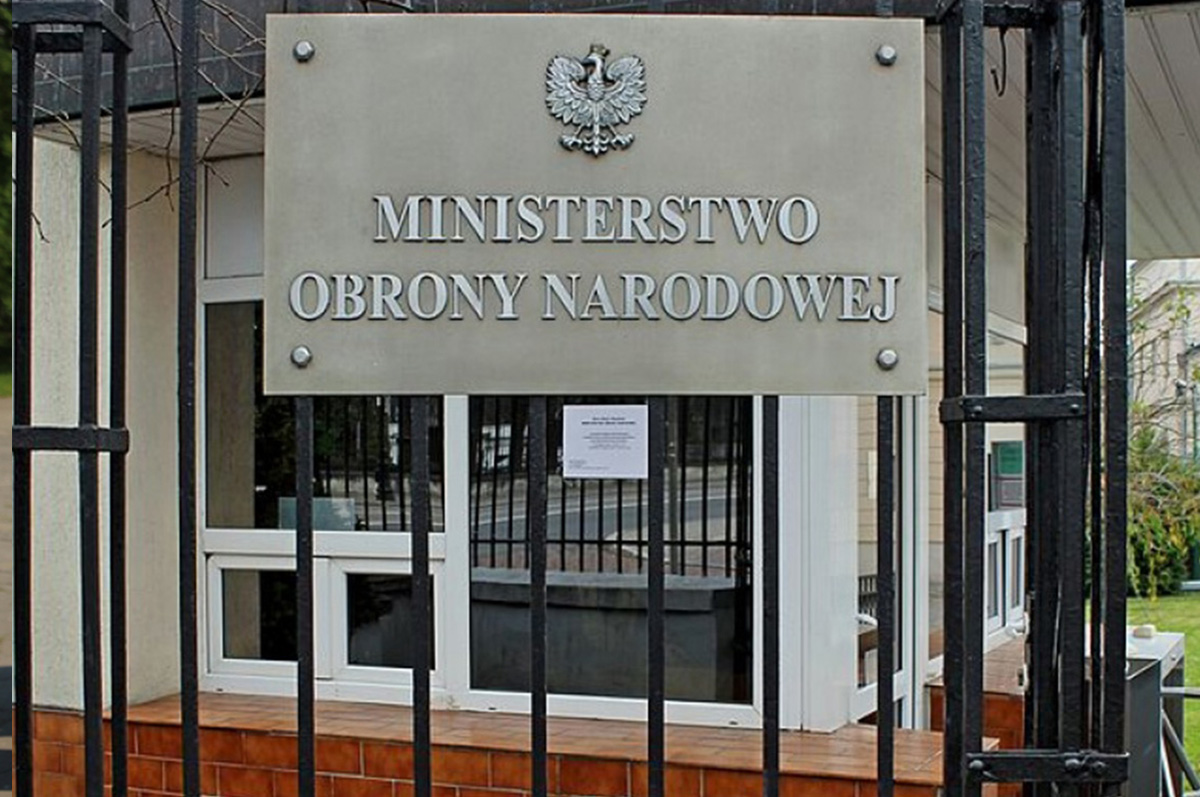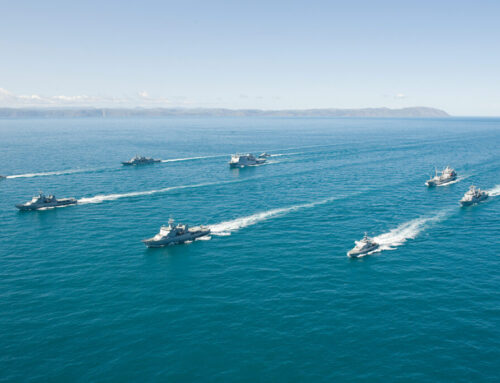PP ANALYSIS Financing purchases in the Polish Armed Forces – creative accounting
Autor foto: Domena publiczna

Financing purchases in the Polish Armed Forces – creative accounting?
August 11, 2017
Author: Robert Rochowicz




PP ANALYSIS Financing purchases in the Polish Armed Forces – creative accounting
Autor foto: Domena publiczna
Financing purchases in the Polish Armed Forces – creative accounting?
Author: Robert Rochowicz
Published: August 11, 2017
Pulaski Policy Paper no 16, August 11, 2017
Every year, the Polish Ministry of National Defence has more and more financial resources available for defence expenditures from the state budget. This should be assessed positively, as the need to purchase modern weapons and equipment has been increasing. Despite this, every year a part of the funds returns to the state budget or is not always effectively spent. Taxpayers’ money is often spent on obtaining equipment that does not significantly increase the level of modernity of the Polish army.
The period of budget savings of the Polish Ministry of Defence ended several years ago (the last economic crisis took place at the end of 2008 and throughout 2009). Maintaining budgetary discipline in the face of the international economic crisis also took place at the expense of a drastic cut in military spending. Then, however, expenses were raised each year. After the last amendments approved by the government, the guaranteed annual expenses on the army would amount to 2 per cent GDP calculated from a given financial year (before the GDP from the previous year was taken into account). In the following years, the percentage rate is to increase to reach 2.5 per cent in 2030.
These assumptions, along with the continuous economic development of the country, guarantee the Ministry of Defence a constantly growing budget. This is important when one compares, for example, the statistics from 2001 and 2013. At the beginning of the 21st century the Ministry of Defence’s budget was just over 15 billion PLN (1.93 per cent of GDP of the previous year) – twelve years later, this amount has doubled. This was mostly due to the fact that in the last decade of the 20th century the money allocated on defence was mainly spent on wages, pensions and disability benefits, and the maintenance of the army in barracks; 10 percent usually remained for technical modernisation. Therefore, the provisions of the law on the reconstruction and modernisation of the Armed Forces and their financing adopted in 2001 guaranteed expenditures at the level of at least 20 per cent of the budget on the so-called central material plans, i.e. property expenses (including arms purchases). This provision made it easier for staff officers to plan long-term budget and prepare long-term technical modernisation programs.
Poland’s joining NATO has also systematized this area of the army’s operation, introducing the principle of preparing ten-year plans with the possibility of their being updated every four years. Within this principle there was, for example, the ‘Polish Armed Forces Development Programme for 2009-2018’ and four years later the last publicly presented document, i.e. the ‘Program for the development of the Polish Armed Forces for 2013-2022’, prepared at a time when Tomasz Siemoniak was the Defence Minister. Although both programs covered the year 2017, their entries are largely outdated due to changes in the political situation.
The first of the mentioned programmes had no chance to be implemented practically from the beginning. The budget cuts forced by the crisis meant that in 2009 expenditures on purchase and investment were reduced by more than 50 per cent leaving only those resulting from already signed contracts. The next two years were a slow return to the right track, but the implementation of the programme in its entirety was no longer an option. This was, however, the programme that was supposed to bring about the long-awaited modernity in the Polish army, which was to be combined with the full-scale professionalisation of military service in 2009 (under the slogan ‘fewer troops, but more modern’). It was in this plan that the final removal of many types of Soviet weapons and replacing them with new patterns was planned. Meanwhile, the equipment purchases had to constantly meet the growing needs of the mission in Afghanistan, pushing away other purchases. Once again, the needs of the fleet, ground artillery and air defence suffered the most. The first four years of the coalition of the PO-PSL did not bring any substantial improvements to the modernisation of the Armed Forces. However, apart from 2009, in the next three years, investment expenditures, although not spectacular and not implemented in full, totalled about 18 billion PLN, as part of the 20 per cent of the MON budget. Although long-term contracts were implemented, including the take-over of APC (armoured personnel carrier) Rosomak vehicles and ATGM (anti-tank guided missiles) Spike, but no significant new arms contract was signed, excluding Mi-17 transport helicopters for the ISAF mission in Afghanistan, controversial purchase of M28 Bryza aircraft at PZL Mielec or equipment for the first Coastal Missile Squadron of the Polish Navy. A question arises here: how were all the points from the Technical Modernisation Plan (TMP) for ten years going to be financed. Since, for the first four years, no significant contract was launched and the money was spent. Of course, there were no chances of doing that, but in this case, the crisis of 2009 came to the defence of the decision-makers. However, such an excuse could not be used in the case of evaluation of the TMP provisions for the years 2013-2022. The document approved in December 2012 assumed the launch of many extremely ambitious projects. Thanks to the admirable and unprecedented decision in the history of the Ministry of Defence made by the then Minister Tomasz Siemoniak, the Press Department of Polish MoD published a table on its website with the armament systems listed to be obtained, and the progress was constantly updated. This information was very popular with the media, opposition politicians and ordinary citizens. Particular records and subsequent changes were widely commented and were a pretext for questions addressed to the ministry via e-mail, social media and parliamentary interpellations under the law on access to public information. The openness with which the 2013-2022 TMP was presented makes us believe in the best intentions of the authors of the document, who assumed that 130 billion PLN planned for property expenditure in ten years would be enough to implement a long list of purchases. However, there are considerable doubts as to whether in the financial sphere everything was correctly calculated. Looking at this document from the perspective of nearly five years since its creation, it seems that the Ministry of Finance was too optimistic in its estimation of possible GDP growth; this in turn translated into a real calculation of the Department of Defence’s budget and, subsequently, expenditure on technical modernization. It was only the increase in the level of defence spending from 1.95 to 2 per cent of GDP that resulted in the assumption that the accumulated funds of the Ministry of Defence, intended for the purchase of arms, would amount to 130 billion PLN in 2022. The complaints addressed to the authors of the programme also apply to another calculation. The current management of the ministry declared that all arms purchases included in the TMP for 2013-2022 by the previous ruling coalition would cost the state not 130 billion PLN but more or less twice as much. The fact that the expenses would be much higher is not subject to discussion, but one must remember about some accounting solutions used (not for the first time) in this type of document. The years of implementation of individual purchases were outlined in such a way that they often went beyond 2022, and that meant that their payment was not entirely included in the above amount. This concerned, among others, the most expensive point on the list, i.e. the medium-range anti-aircraft Wisla system, as well as the majority of combat ships for the Polish Navy.
The example of a tender for helicopters and preliminary talks on the Wisła system has also shown that frequent underestimation of the purchase of a particular weapon system is often a problem for defence planning. It is true in the case of almost all armaments programs in the world; however, the awarding of a tender for multi-task helicopters was a huge PR failure of the Ministry of National Defence. Not only has the target number of machines and the division into individual specialist versions changed several times, it turned out that the value of the purchase was greatly underestimated. Despite the reduction in the number of helicopters from 70 to 50, the value of the cheapest offer was higher by over 4 billion PLN compared to the one assumed by specialists in the Ministry of Defence. The first leaks from negotiations on the price for the purchase of the Wisła system were even more devastating for the Ministry of National Defence.
No lessons from the past?
Finally, it is worth looking at the effects of the work of the current leadership of the Ministry of Defence, which in May 2017 presented the final version of the Strategic Defence Review (SDR) for Poland for 2017-2032. The document outlined the most important directions of changes in the Polish army in the perspective of the next fifteen years. During the presentation of the ‘Defence Concept of Poland until 2032’ (i.e. open to the public conclusions of the SDR) Minister Antoni Macierewicz and Undersecretary of State Tomasz Szatkowski mentioned that the team of experts, making all necessary calculations, assessed the forecasted rate of economic growth. After translating this growth into the growing budget of the Ministry of Defence, it was stated that in the next fifteen years, about 500 billion PLN would be earmarked for all necessary property purchases in the coming 15-year period. However, it is only this autumn when the Technical Modernization Plan for 2017-2028 is to be created, taking into account the provisions of the SDR. With such a pool of planned money, the Ministry will certainly consider purchasing the most advanced weapons systems. It must be remembered, however, that property expenses are not only purchases of equipment. It is also the development of infrastructure and repairs of equipment already in operation.
However, what is really behind the calculation of these 500 billion PLN may raise doubts. This sum divided into fifteen years gives approximately an average of over 33 billion PLN annually. Meanwhile, the defence budget in 2017 is just under 37 billion PLN, of which about 12 billion PLN has been planned for property purchases. For the next two years, the government forecasts GDP growth of around 4 per cent compared to the previous year. This is a record growth in this decade, as well as the second best result in Europe. With a good economic situation, it is probably achievable, but maintaining it for fifteen years in a row seems highly doubtful. So this is the first questionable variable in this financial jigsaw. Even leaving such a high growth rate for the period of fifteen years, i.e. until 2032, may not ultimately give the amount foreseen for investment expenditures.
Let us assume, however, that the budget will grow at such a high rate and by around 2030 it will exceed even 100 billion PLN. Here is another variable. Currently, investment spending absorbs less than 30 per cent of the entire budget. It is true that this value has recently been growing steadily (it has already exceeded 25 per cent), but it will not be done indefinitely. The plan is to significantly increase the size of the army, so the sums spent on its current maintenance, as well as all benefits, i.e. salaries, pensions and disability benefits will increase. Meanwhile, the simulation of budget growth up to 2032, including even a few variables that are difficult to meet, namely: an annual 4 per cent increase in GDP; the gradual increase in the Defence Ministry’s budget rate to 2.5 percent of the GDP; and the assumption that property expenses will absorb 40 per cent of funds spent on the military (although it is not known how it will be shaped in subsequent years), will not guarantee the sum announced by the Ministry of Defense during the fifteen-year long period.
The current leadership of the Ministry of Defence seems to be serious about arms purchases. In less than two years of work, much more long-term contracts have been signed than during the previous parliamentary term. On the list there are anti-aircraft systems: Pilica, Poprad and Piorun, trucks, small arms, armaments for F-16, self-propelled howitzers Crab, self-propelled mortars Rak, passenger airplanes for VIP transport (although some of them are, of course, the finalization of works started during the previous parliamentary term). The weakness is the lack of openness in the presentation of long-term plans, compared to the period from 2012 to 2016. Presentation of financial calculations and purchase plans adopted for the next 15 years could make the government’s plans for the army credible and answer the arguments of the opponents in a substantive discussion. In addition, the assessment of real successes and possible failures would be much easier.
Conclusions and recommendations
1. During the preparation of new versions of modernization programs under the TMP, subsequent ministers of defence have been making the same mistakes for years. On the one hand, they are too optimistic about the GDP growth translating into the Defence Ministry’s budget, and on the other hand, they incorrectly calculate the real purchase costs of particular weapon systems. Although the needs of the army in the sphere of new weapons are enormous, it is worth either determining real priorities or preparing an alternative program.
2. A new Technical Modernization Program is urgently needed which would take into account the announced conclusions from the Strategic Defence Review. It would balance all the needs of the expanding army, and show the politicians how much money can really be spent (it may turn out that when faced with other needs the plan to purchase 100 new multirole combat aircraft or 160 long range rockets launchers Lobster will have to be abandoned).
3. Decisions on defence matters should be the effect of the consensus reached by all decision-making centres and political forces. The enormous amount of taxpayers’ money that is spent every year on the military should be spent in a thoughtful manner and guarantee a real increase in the state’s security. Nowadays very often the decisions made by one ruling coalition are cancelled after the next election by the successors.
4. Expenditure planning up to the year 2030 seems to be a duplication of activities of the previous leadership of the Ministry of Defence, which put off the implementation of many programs for a ‘longer time perspective.’ Of course, long-term expenditure planning is necessary. It is worth mentioning, however, that the vast majority of programs are delayed for many years. These expenses will surely accumulate in the next decade, which means that some of the plans will be moved or even removed again.
Author: Robert Rochowicz, Research Fellow in the Security and Defense Program of the Casimir Pulaski Foundation





